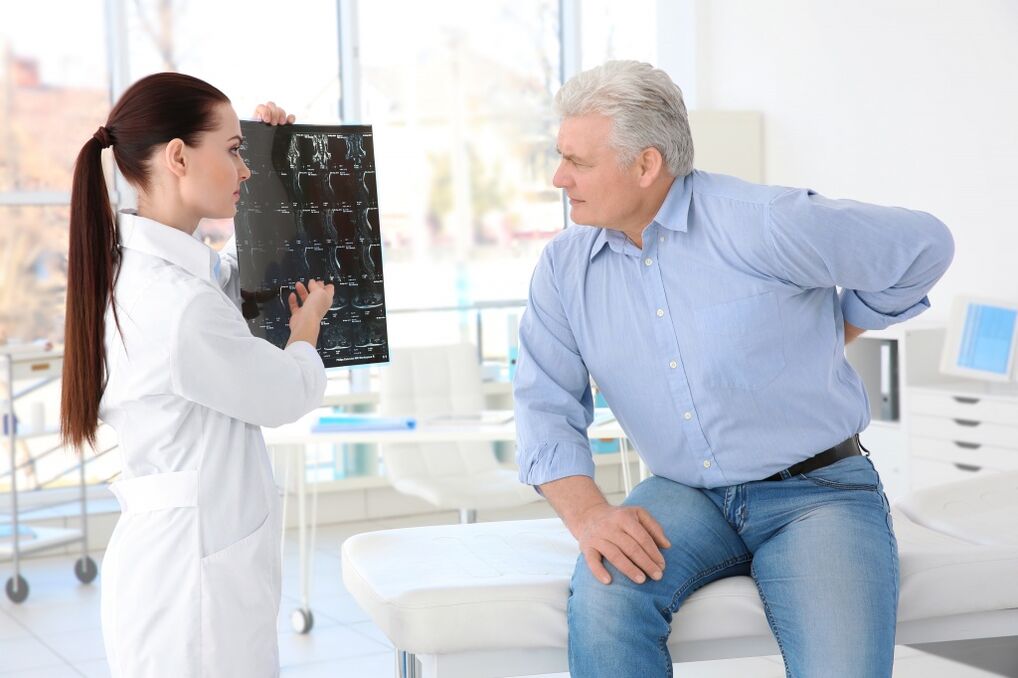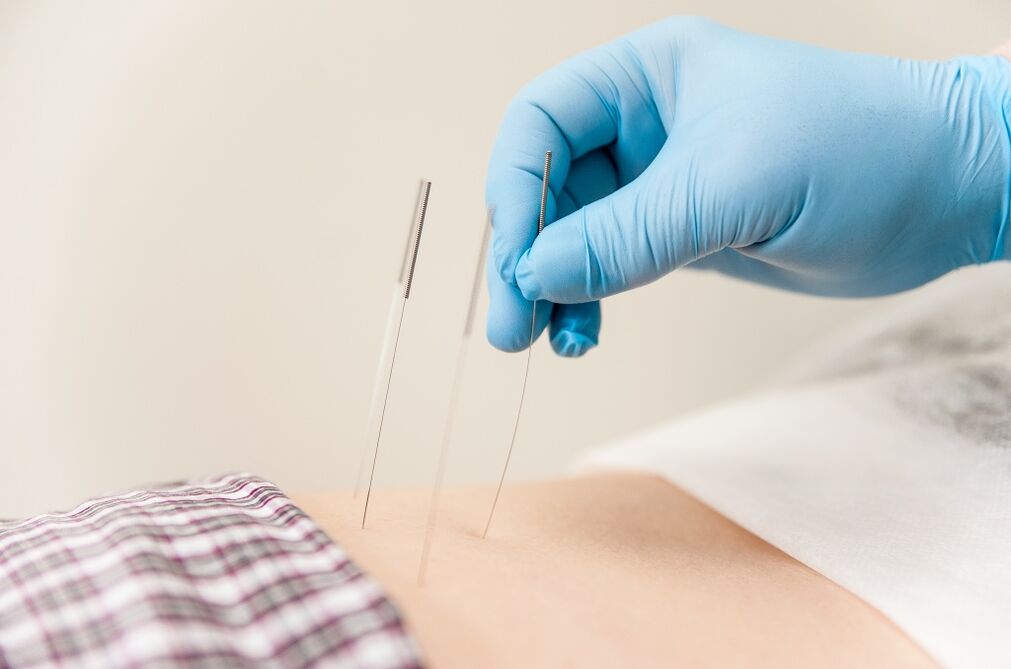Osteochondrosis is known as a depth of a cinema as a cartilage tissue of the band fire joints, which leads to its destruction.The localization of osteochondrosis in the vertebrae of the thoracic spine is called thoracic osteochondrosis.Compared to the osteochondrosis of other localization - cervix or lumbar - chest osteochondrosis, anatomical properties of the structure of the breast is less often diagnosed.It is a relatively static structure in which the mobility of the spine itself is relatively low - even with an active pathological process in the intervertebral discs, the likelihood of its injury is minimal.In the recent past, when the diagnostic skills were limited, thoracic osteochondrosis was regarded as the privilege of exclusively older patients.Now it is not only identified at a young age, but also in childhood.

Why does thoraxosteochondrosis develop?
The following should be differentiated from the causes of the thoraxosteochondrosis:
- Pathology of vertebrae and intervertebral discs - both hereditary and various factors are acquired;
- Violations of blood supply to the spine;
- Excessive or irrational physical activity on the spine (during sports or because of hard physical work);
- Violations of the mineral metabolism in the body, lack of some trace elements;
- sedentary lifestyle, sedentary professional activity;
- Weakness of the back muscles, which led to an inappropriate attitude and irrational distribution of the load on the spine;
- Injuries.
In addition, there are a number of factors that can provoke an aggravation of the disease in their chronic course:
- Injury;
- Stress, excessive nervous tension;
- Settlement of the body - both general and local hypothermia of the muscles of the back;
- Physical overload.
Why is the thoracic osteochondrosis dangerous?
Osteochondrosis of the thoracic spine is an illness that is accompanied by significant pathological changes in the vertebrae and the band fire joints.Accordingly, the first episode of such a disease is the destruction of structures that form the spine.The result of this can be scoliosis, pathology of the respiratory system (pneumonia, pneumosclerosis), impaired bloodstream of internal organs, diseases of the upper stomach intestine (pancreatitis, cholecystitis).The negative consequences of thoracic osteochondrosis can also apply to the teaching system.The persistent pain syndrome, which is characteristic of osteochondrosis, reduces the quality of life and can "disguise" for other diseases, which leads to improper diagnoses and treatment.
How manifests the thoracic osteochondrosis?
With thoracic osteochondrosis, the symptoms are quite characteristic:
- pain - It occurs when a person has been in a position for a long time, as well as movements, lifting weights and physical exertion.Dull constant pain in the area of the shoulder blades are characteristic and the pain when they try to raise their hands.
- Interkostal -Neuralgia;
- Feeling in the chestas a result of which deep breathing becomes difficult;
- Sensibility decrease certain areas of the skin;
- Paraesthesia - a feeling of "creeping goosebumps" on the skin, burning, tingling;
- Temperature loss Certain zones on the skin;
- Temperature loss Leg leather, Itching feeling combustion in them;
- Digestion disorders.
Two basic types of pain that accompany the osteochondrosis of the thoracic spine: dorsalgiyu (extended pain in the area of affected bandwriters) and Dorsago (intensive paroxysmal pain, accompanied by muscle lines and breathing difficulties) are differentiated.
The so -called so -called osteochondrosis is characteristic of osteochondrosis Gastro syndrome - Pain in Epigastria, not with meals, day and season.
Degree of thoraxosteochondrosis
In clinical practice, 4 degrees of osteochondrosis of the thoracic spine are distinguished, depending on the degree of damage to the cartilage and participation in the pathological process of the surrounding structures.
Toraxosteochondrosis of the spine of the 1st degree: The slices between the vertebrae lose their, somewhat diluted elasticity, the local projections - lead in the fibers of the windows.
Thorax osteochondrosis of the 2nd degree: The thinning of the intervertebral discs progress, the thoracic spine loses stability.The pain begins to disturb at this stage, often neurological symptoms agree: paraesthesia, deafness of the skin.Cracks can occur on the fibrous ring of the intervertebral disc.
Toraxosteochondrosis of the spine of 3 degrees corresponds to the formation of Schwandral hernia.
Thoracic osteochondrosis 4 degrees It is characterized by a complete loss between the vertebral animal disc of its depreciation properties.The flap of the vertebrae becomes critical, the bone tissue begins to collapse.Blood vessels and nerves are violated in the channels of the spine, which leads to persistent neurological symptoms, intensive Bolevomu syndrome and circulatory disorders.
Diagnosis of a thoracic osteochondrosis
The diagnosis of "thoracic osteochondrosis" is based on an overview of the patient, his examination and examination: radiography and magnetic resonance imaging.An X -ray study helps to determine the localization of the lesion of the spine, and magnetic resonance imaging is to clarify the diagnosis and to exclude the presence of benign and malignant neoplasms.
A number of symptoms of an osteochondrosis of the thoracic spine is not specific - the same signs can indicate other diseases.This explains rather frequent mistakes in the diagnosis if the patient is treated, for example, due to pain for pancreatitis for a long time, the true cause of which is breast osteochondrosis.Therefore, comprehensive diagnostics, the neighboring specialists - gastroenterologists, pulmonologists - attract the patient's additional examination.
Thorax osteochondrosis: treatment

In view of the fact that the restoration of the destroyed cartilage is impossible, the effective treatment of breastosochondrosis is only possible in the early stages of the disease until the cartilage has lost its structure.It is therefore particularly important to consult a doctor in good time - if the first manifestations of pathology, discomfort in the back, insignificant pain, the numbness of skin areas or its burning feeling have appeared.
In the first stages of the disease, the treatment focuses on non -narcotic analgesics that enable pain and non -steroidal anti -inflammatory drugs that reduce the intensity of the inflammatory process in the tissue and also eliminate pain.However, the most important focus in the treatment of the initial stage of the osteochondrosis of the thoracic spine is preserved.This is the name of a group of medication that is intended to restore the normal metabolism in the cartilage tissue, which leads to an improvement in cartilage trophism and slowing down its destruction.
With the progress of the pathological process of non -steroidal anti -inflammatory means of relieving inflammation, it is usually not sufficient, which forces the doctor to complement the glucose from Cortico with steroid medication.In addition, diuretics can be added to the list of medicines that enable to remove swelling in the roots of injured spinal nerves and thus relieve suitable neurological symptoms and pain.The inclusion of anti -spasmodikers in the therapy makes it possible to eliminate muscle cramp, which accompanies the osteochondrosis of the thoracic spine.
With the development of intermediate vertebral hernia and the destruction of the bone tissue of the vertebrae, conservative treatment loses its effectiveness, the only reasonable alternative is the surgical treatment of osteochondrosis.
Physiotherapy for breast osteochondrosis
Outside of exacerbation periods, physiotherapy brings good results.The Brustr region's effective methods in osteochondrosis include:
- Laser therapy;
- Magnetotherapy;
- Extension - both dry and wet;
- Vacuum therapy;
- Acupuncture;
- Farmakopunktura.
In addition, massage and manual therapy include popular and effective physiotherapeutic methods for breastosochondrosis.Preventive massage courses for patients with osteochondrosis of the Brustr region must be subjected to at least twice a year.At the same time, all manipulations should be as economical as possible, exclusively outside of exacerbation times, so as not to provoke the pathological process.

Media sports lessons for thoracic osteochondrosis
An important component of the complex treatment of the thoracic osteochondrosis of the spine is therapeutic physical education (training therapy). The task of the exercises is to restore the mobility of the intermediate tasting joints, to eliminate muscle cramp and to eliminate the stiffness in the spine.With LFK you can strengthen the sore muscles and increase the physical mobility of the patient as a whole, which is an important factor for blood circulation stimulation and restoration of lung ventilation.
Before you carry out a complex of special exercises, you should carry out a slight general warm -up that aims to warm up the muscles or take a warm shower.High -quality warming before class avoids injuries.All movements should be smooth, it is necessary to avoid sharp tendencies and curves that can worsen the damage to the spine.
Osteochondrosis of the thoracic spine is a chronic disease that significantly reduces the quality of the patient's life and is dangerous to its complications.The timely speech to the doctor and the complex complex treatment, started with the first signs of the disease, helps to stop the pathological process and eliminate unpleasant symptoms.





































